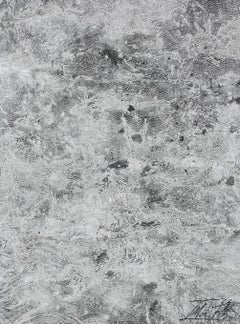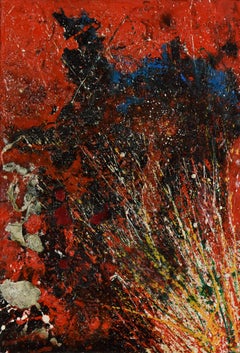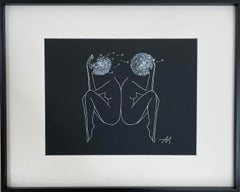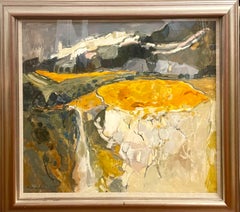Toshimitsu Imai Paintings
Born in Kyoto, Japan, in 1928, Toshimitsu Imai was part of the 20th-century Japanese avant garde. He began his formal education at the Tokyo State Art Academy where he took up painting. His early works are characterized by colorful abstractions, reminiscent of Fauvism. In 1951, Imai was awarded the Kansai-Shinseisaku Prize and in 1952 the prize for the best new artist at the 15th Shinseisaku Salon.
Imai relocated to Paris in 1953, the same and subsequent year he exhibited at the Salon de L’Art Sacré. Meanwhile, he attended the Académie de la Grande Chaumière and the Sorbonne to study medieval history and philosophy. In 1955, Imai completely abandoned representational art in favor of abstraction. After meeting the art critic Michel Tapié via the artist Sam Francis, Imai was the first Japanese artist to join the Art Informel movement.
In 1956, Imai was called upon by the Japanese artist Taro Okamoto to curate an exhibition titled “The World: Today’s Art in Tokyo.” Artists such as Jean Dubuffet, Jean Fautrier, Lucio Fontana and Karel Appel gained important exposure in Japan. It was also in 1957, when Imai arranged for Tapié and the artists Georges Mathieu and Sam Francis to travel to Japan, that a connection between Art Informel and Gutai occurred. The Ashiya-based Gutai Art Association, formed in 1954, was proclaimed a kindred spirit and subsequently promoted internationally by Tapié. Founding members included Yoshihara Jiro, Kanayma Akira, Murakami Saburo, Shiraga Kazuo and Shozo Shimamoto. The art historian Yve-Alain Bois commented, “The activities of the Gutai group in the mid 1950s constitute one of the most important moments of postwar Japanese culture.”
Most notably, Imai’s work was exhibited at the São Paulo Biennial in 1953 and the Venice Biennale in 1960, which brought him international acclaim. In addition, his work was sold by the art dealer Leo Castelli in New York in 1956 and was exhibited at the legendary Galerie Stadler in Paris. In 1962, Imai was awarded a prestigious prize at the 5th Exhibition of Japanese Contemporary Art in Tokyo. Several works from this exhibition can now be found in the Museum of Modern Art, Tokyo.
Although largely an abstract painter, Imai fluctuated between figurative and abstract, and in the 70s he began to integrate poetic text into his paintings. At this time, he split his time between Paris and Japan, later participating in a two-year show at the Centre Pompidou in Paris in 1982. In 1984, Imai cofounded the Japanese Contemporary Artists’ Association.
In 1991 Imai was made an honorary citizen of Madrid and in 1992 of Lyon. He received numerous distinctions and awards, including being named a chevalier de la Légion d’honneur in 1996 and in 1997 an officier de l'Ordre des Arts et des Lettres.
(Biography provided by Stern Pissarro Gallery)
1990s Abstract Toshimitsu Imai Paintings
Acrylic, Paper
1960s Abstract Expressionist Toshimitsu Imai Paintings
Canvas, Oil
2010s Abstract Toshimitsu Imai Paintings
Paper, Acrylic, Watercolor, Felt Pen
Late 20th Century Abstract Expressionist Toshimitsu Imai Paintings
Canvas, Oil
1940s Abstract Expressionist Toshimitsu Imai Paintings
Canvas, Oil
2010s Abstract Toshimitsu Imai Paintings
Paper, India Ink, Acrylic
1950s Abstract Expressionist Toshimitsu Imai Paintings
Canvas, Oil
1960s Abstract Expressionist Toshimitsu Imai Paintings
Canvas, Oil
2010s Abstract Toshimitsu Imai Paintings
Acrylic, Archival Paper
1960s Abstract Expressionist Toshimitsu Imai Paintings
Canvas, Oil
2010s Abstract Expressionist Toshimitsu Imai Paintings
Canvas, Oil
2010s Abstract Toshimitsu Imai Paintings
Acrylic, Archival Paper
1980s Abstract Expressionist Toshimitsu Imai Paintings
Canvas, Pastel, Mixed Media, Oil, Handmade Paper
1960s Abstract Expressionist Toshimitsu Imai Paintings
Canvas, Oil



